1. Mountain Pose (Tadasana)
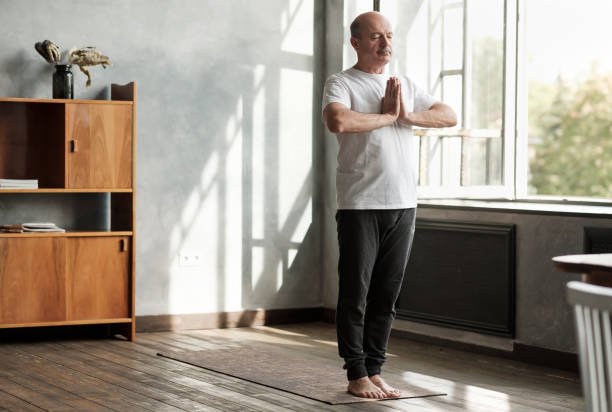
Mountain Pose is a foundational yoga pose that promotes good posture and alignment. To perform this pose, stand tall with your feet together, arms by your sides, and distribute your weight evenly on both feet. Engage your thighs, lift your chest, and extend through the crown of your head. Benefits of Mountain Pose (Tadasana):
- Improves Posture: Tadasana helps you become more aware of your body alignment and encourages good posture.
- Strengthens Legs and Core: This pose engages the muscles in your legs, feet, and core, helping to build strength and stability.
- Enhances Balance: By focusing on grounding your feet and distributing your weight evenly, Tadasana improves your overall balance.
- Increases Awareness: It encourages mindfulness and awareness of your body and breath, promoting a sense of calm and centeredness.
- Relieves Tension: Standing tall and stretching your spine can help relieve tension in the back, neck, and shoulders.
2. Downward-Facing Dog (Adho Mukha Svanasana)
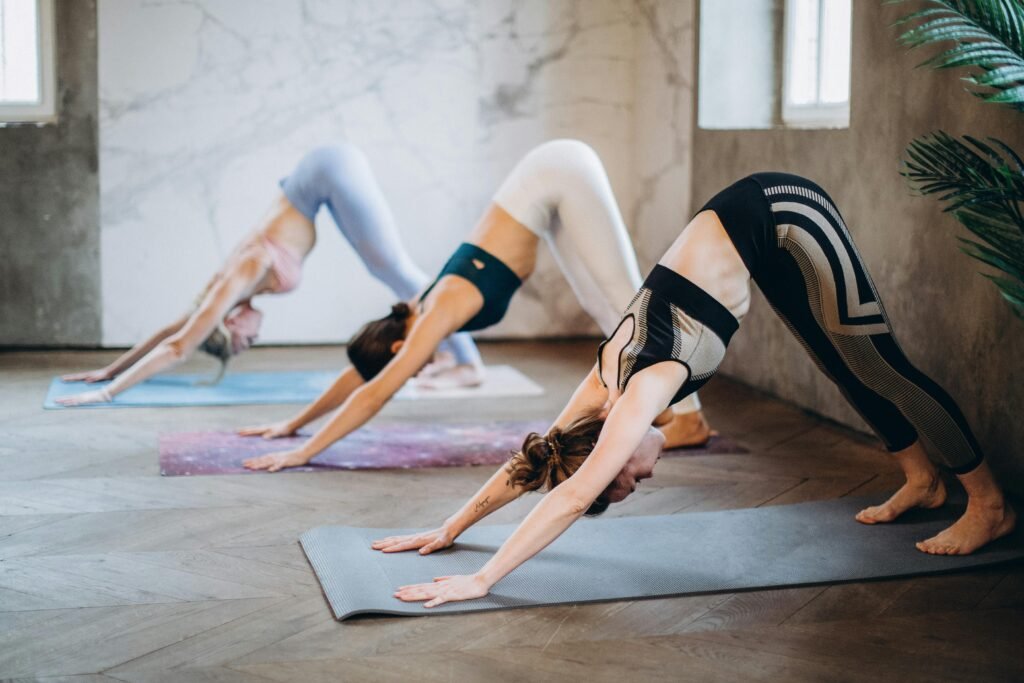
Downward-Facing Dog stretches the entire body. Begin on your hands and knees, then lift your hips toward the ceiling, forming an inverted V shape. Keep your hands shoulder-width apart and your feet hip-width apart. This pose strengthens the arms, shoulders, and legs while lengthening the spine. Benefits include:
- Strengthens the Upper Body: This pose engages the shoulders, arms, and wrists, helping to build strength and stability.
- Stretches the Hamstrings and Calves: Downward Dog provides an intense stretch for the back of the legs, improving flexibility.
- Lengthens the Spine: The pose helps to elongate and decompress the spine, relieving tension and promoting spinal health.
- Improves Circulation: Inverted poses like Downward Dog enhance blood flow to the brain, which can be invigorating and refreshing.
- Calms the Mind: Holding the pose and focusing on the breath can help reduce stress and anxiety, promoting a sense of calm.
3. Warrior I (Virabhadrasana I)
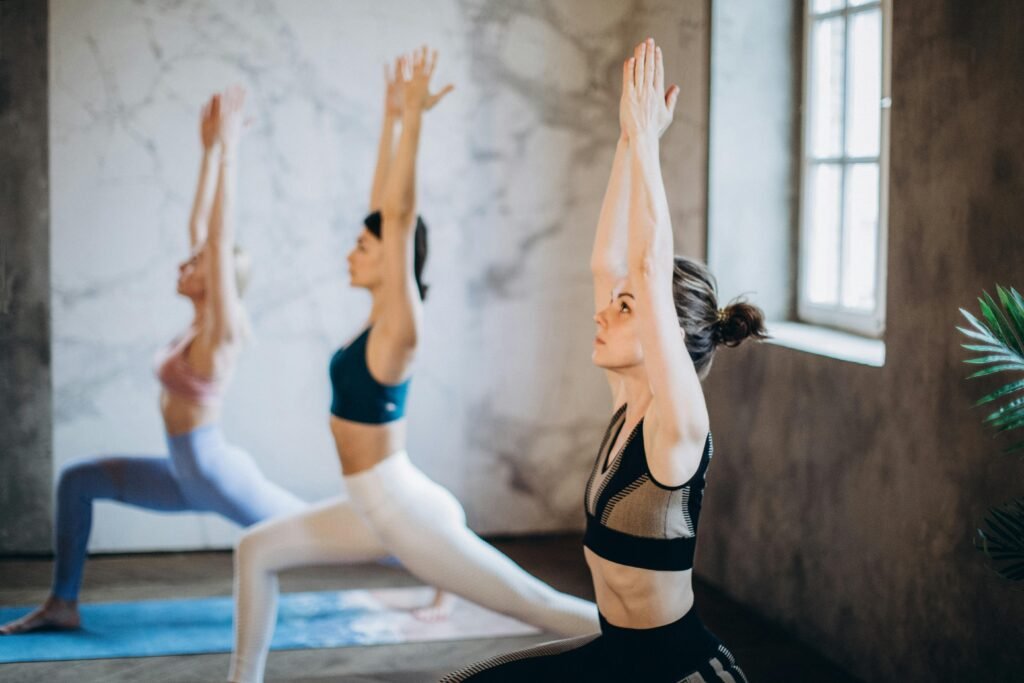
Warrior I is a powerful pose that strengthens the legs and opens the hips. Step one foot forward into a lunge, keeping the back leg straight. Raise your arms overhead, with palms facing each other, and look up at your hands. This pose also improves balance and focus. Benefits of Warrior 1:
- Strengthens the Legs and Glutes: Warrior I engages the quadriceps, hamstrings, calves, and glutes, building strength in the lower body.
- Opens the Hips and Chest: This pose helps to open and stretch the hips and chest, improving flexibility and posture.
- Enhances Balance and Stability: By requiring you to balance on one leg with the other extended behind, Warrior I improves your overall balance and stability.
- Builds Core Strength: Engaging the core muscles to maintain the pose helps build core strength and stability.
4. Child’s Pose (Balasana)
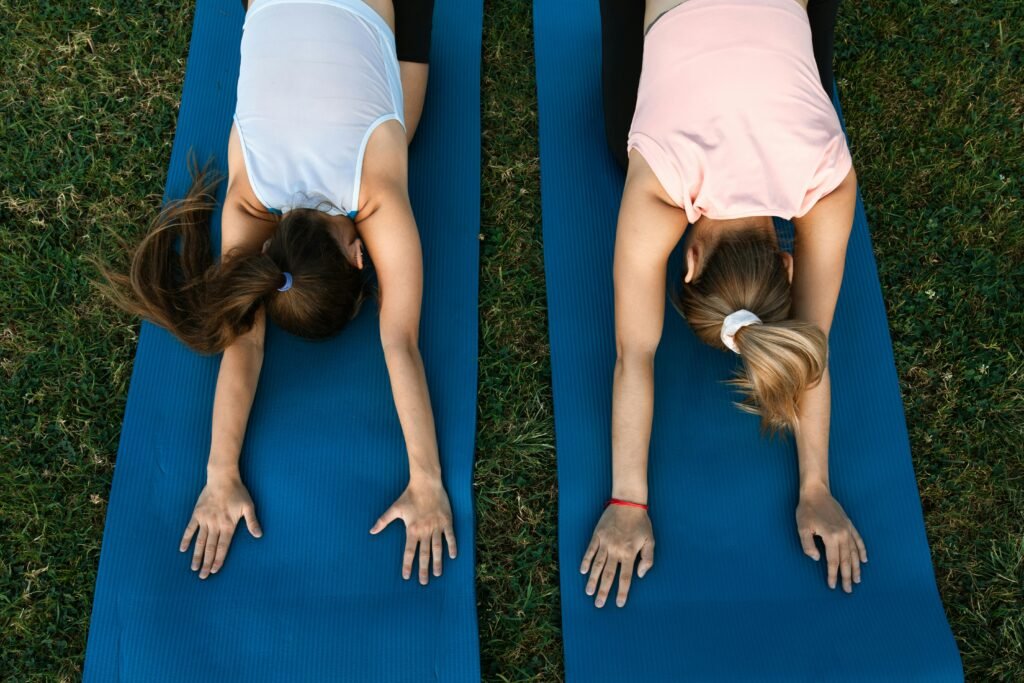
Child’s Pose is a restorative pose that promotes relaxation. Kneel on the floor, touch your big toes together, and sit on your heels. Lower your torso between your thighs and extend your arms forward or alongside your body. This pose gently stretches the hips, thighs, and ankles while calming the mind. Benefits of Childs Pose include:
- Stretches the Back and Hips: This pose provides a gentle stretch to the spine, hips, thighs, and ankles.Alleviates Back Pain: The gentle stretch can help alleviate tension and pain in the lower back.Improves Digestion: The gentle compression of the abdomen can help stimulate digestion.
5. Cat-Cow Pose (Marjaryasana-Bitilasana)
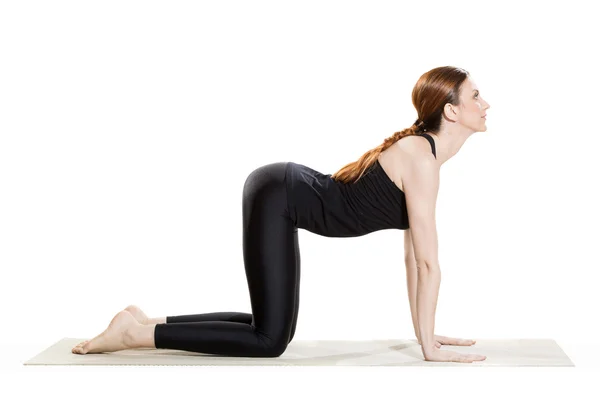
Cat-Cow Pose is a gentle flow between two poses that warms up the spine. Start on your hands and knees, then alternate between arching your back (Cow Pose) and rounding it (Cat Pose). This sequence increases flexibility in the spine and promotes better posture. Benefits include
- Strengthens the Spine and Abdomen: The rhythmic movement between Cat and Cow engages and strengthens the spinal muscles and the core.
- Promotes Spinal Health: Regular practice can help maintain spinal health by keeping the spine fluid and mobile.Relieves Back Pain: The gentle stretching can alleviate tension and pain in the lower back.Enhances Coordination: Moving between the two poses helps to improve coordination and body awareness.
